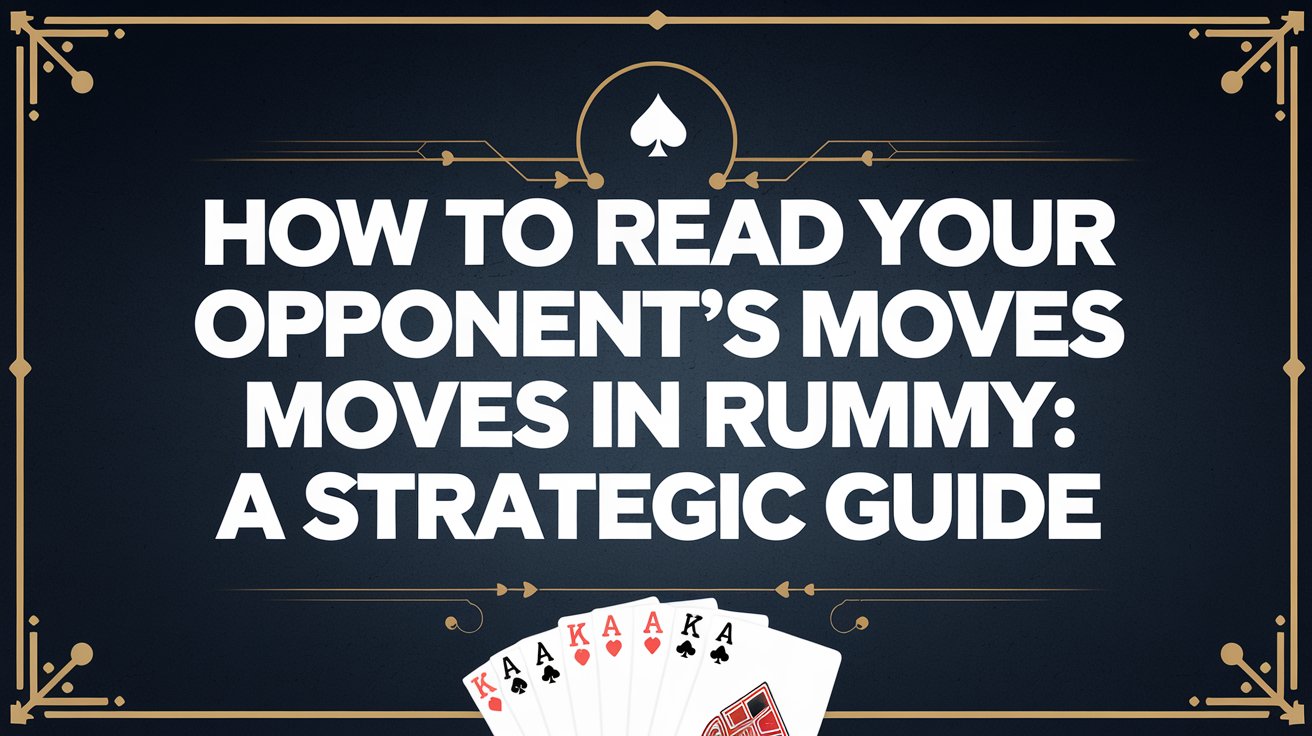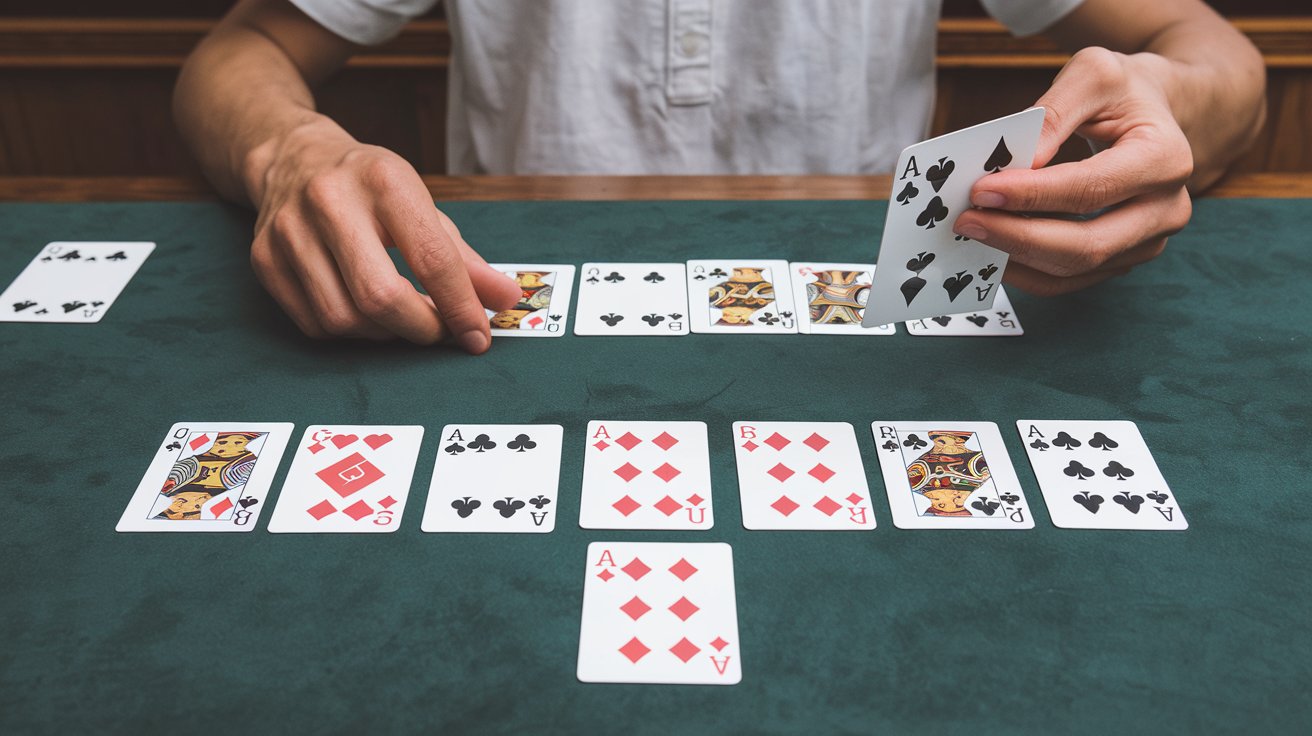Rummy is a game that requires both skill and strategy. While many players focus on the cards they hold, an equally important aspect of the game is understanding what your opponents are doing. One of the most effective ways to improve your chances of winning is by reading your opponent’s moves. By paying close attention to their behavior, discards, and card draws, you can gain valuable insights into their strategies and use that information to your advantage.
In this blog, we’ll explore how to read your opponent’s moves in Rummy effectively. Whether you’re playing Gin Rummy, Indian Rummy, or any other variation, these strategies will help you understand your opponents’ tactics and make more informed decisions. By the end of this guide, you’ll be able to predict your opponents’ actions, spot their weaknesses, and outplay them with confidence.
Understanding the Basics of Rummy

Before diving into the strategies of reading your opponents, it’s essential to understand the basics of Rummy. Here’s a quick recap:
The Objective
The goal in Rummy is to be the first player to form melds with the cards dealt to you. A meld can be:
- Sets: Three or more cards of the same rank (e.g., 7♠ 7♦ 7♣).
- Runs: Three or more consecutive cards of the same suit (e.g., 4♠ 5♠ 6♠).
Once you’ve formed valid sets or runs, you can discard the remaining cards, and the game ends when you discard your last card.
Drawing and Discarding Cards
- Players take turns drawing cards either from the stockpile (face-down cards) or the discard pile (face-up cards).
- After drawing a card, they must discard one card to end their turn.
The most important thing to remember is that Rummy is as much about observation as it is about the cards in your hand. By reading your opponent’s actions, you can adjust your strategy and increase your chances of winning.
How to Read Your Opponent’s Moves in Rummy

Now that we’ve covered the basics, let’s look at how to read your opponent’s moves in Rummy. There are several clues and behavioral patterns that will reveal valuable information about their hand.
1. Watch Their Discards Carefully
One of the most significant indicators of what your opponents are working on is their discard pile. The cards that they discard give away important information about their hand and strategy.
How to Analyze Their Discards:
- What are they discarding consistently?
- If your opponent is discarding a particular rank or suit, they might be working on completing a run or a set with cards of that rank or suit. For example, if they discard a 5♠, then a 6♠, and later a 7♠, it’s likely they are trying to form a run of spades.
- Are they discarding high-value cards?
- Discarding face cards (Jack, Queen, King) or Aces might indicate that the player is trying to form sets or runs but is stuck with high-point cards. If they discard these cards early, it could be a sign that they are struggling to complete a hand.
- Look for gaps in their hand.
- If your opponent discards cards that fit well into a run or set, they might be holding onto an incomplete combination. For example, if they discard a 9♠ but keep a 10♠, they might be looking for a J♠ to complete their run.
Tip: If you see your opponent discarding a card they might need later, don’t pick it up unless it’s necessary for your own hand. You can use this knowledge to prevent them from completing their set or run.
2. Watch Their Pickups from the Discard Pile
What your opponent picks up from the discard pile is just as important as what they discard. Picking up a card from the discard pile reveals what they’re currently working on or trying to complete.
How to Read Their Picks:
- Are they picking up high-value cards?
- If your opponent consistently picks up high-value cards like 10s, Jacks, or Kings, it might suggest that they are focusing on forming sets with high-point cards. This is an important clue because it could help you predict their next move.
- Are they trying to complete a specific run or set?
- If they pick up cards that would complete a run or set, pay attention. For instance, if they have 5♠ 6♠ in hand and pick up a 7♠, they are likely working on completing a run. Similarly, if they pick up cards that match their hand’s rank, it’s clear they’re trying to form a set.
- Are they trying to block you?
- If your opponent picks up a card that you discarded, they might be trying to form a set or run with it. In such cases, be cautious about discarding cards that could help them complete their hand.
Tip: Avoid discarding cards that could potentially complete your opponent’s sets or runs. If you see them picking up a card from the discard pile, make sure you aren’t discarding the same card again, as it could allow them to complete their hand.
3. Watch Their Drawing Patterns
The way your opponent draws cards — from the stockpile or discard pile — can reveal a lot about their hand. If they are drawing only from the stockpile, it might mean they are waiting for a specific card to complete their hand. On the other hand, if they’re picking up from the discard pile, it could indicate that they are actively working to complete a particular set or run.
How to Track Their Drawing Patterns:

- Drawing from the stockpile: If your opponent is drawing from the stockpile, they may not have many immediate options and could be trying to complete their hand with random cards. Watch closely to see if their hand starts coming together with consecutive picks.
- Drawing from the discard pile: If your opponent is consistently picking up from the discard pile, they are likely working on a specific combination. For example, if they repeatedly pick up cards from the same suit or rank, it’s a good indicator that they are forming a run or a set.
Tip: Track how many cards your opponent picks from the stockpile vs. the discard pile. This will give you an idea of whether they are progressing towards completing their hand or struggling to form melds.
4. Monitor Their Playing Speed and Hesitations
Your opponent’s playing speed can offer subtle clues about the strength of their hand. A player who is confident and quick may have a hand that is close to going out. On the other hand, a player who hesitates before making a move might be stuck with incomplete melds or struggling to find a way out.
What to Look for in Playing Speed:
- Quick moves: If your opponent is making fast moves, it could indicate they are close to completing their hand and ready to go out. Pay attention to their discards and draws to see if they are approaching a winning hand.
- Hesitation: If your opponent hesitates before discarding or drawing, they may be stuck with high-value cards or incomplete combinations. This could be a good time for you to press forward with your strategy and take advantage of their indecisiveness.
Tip: Use the information about their speed to adjust your strategy. If they are hesitating, consider making aggressive moves to take control of the game.
5. Pay Attention to Their Melding Behavior
The way your opponent melds (or chooses not to meld) can tell you a lot about the strength of their hand. If they are quick to lay down their cards, they are likely ready to go out. Conversely, if they’re holding their cards back, they might not have any valid sets or runs yet.
How to Read Melding Behavior:
- Early melding: If an opponent lays down a set or run early in the game, it might indicate they have a strong hand and are trying to get rid of cards quickly. Be cautious with your discards and avoid giving them cards they need.
- Delayed melding: If your opponent is holding onto their cards for an extended period, they might be waiting for a particular card to complete their hand. This is an opportunity for you to pay attention to the cards they are discarding and adjust your strategy accordingly.
Tip: If your opponent is not melding, be patient and observe the cards they are discarding. This could help you predict their next move and make more informed decisions.
6. Pay Attention to Their Hand Size
In Rummy, players are always trying to reduce the number of cards in their hand. By observing how many cards your opponent has left, you can gauge their progress and adjust your strategy accordingly.
How to Track Their Hand Size:
- Fewer cards: If your opponent has fewer cards left in their hand, they are likely close to completing their melds and may be preparing to go out. Watch for signs that they are getting closer to finishing their hand.
- Many cards: If your opponent has a large number of cards, they might be struggling to form valid melds. Use this opportunity to make aggressive plays and try to complete your own hand before they can catch up.
Tip: Keep track of how many cards your opponent has left. The fewer the cards, the more likely they are to win soon, so you should focus on defensive strategies.
Conclusion: Mastering the Art of Reading Your Opponent in Rummy
Reading your opponent’s moves in Rummy is an essential skill that can elevate your gameplay and increase your chances of winning. By paying close attention to their discards, pickups, drawing patterns, and other behavioral cues, you can gain valuable insights into their hand and adjust your strategy accordingly. Rummy is a game of both skill and psychology, and being able to read your opponents gives you a significant edge.
With practice, you’ll become better at observing your opponents’ moves, understanding their strategies, and responding with your own well-timed tactics. So, the next time you sit down for a game of Rummy, use these strategies to keep an eye on your opponents and outsmart them. By doing so, you’ll not only improve your skills but also enjoy the game at a whole new level!

Zareb Saleh is a journalist at Gulf Today and a ghostwriter for Gameoholic, specializing in gaming, technology, and digital culture. With a keen eye for industry trends, he delivers insightful stories that engage and inform readers.




